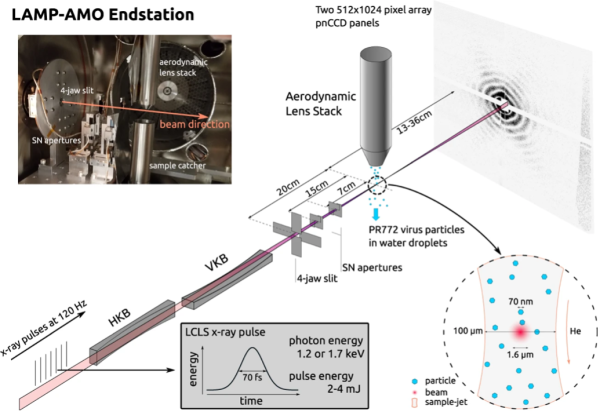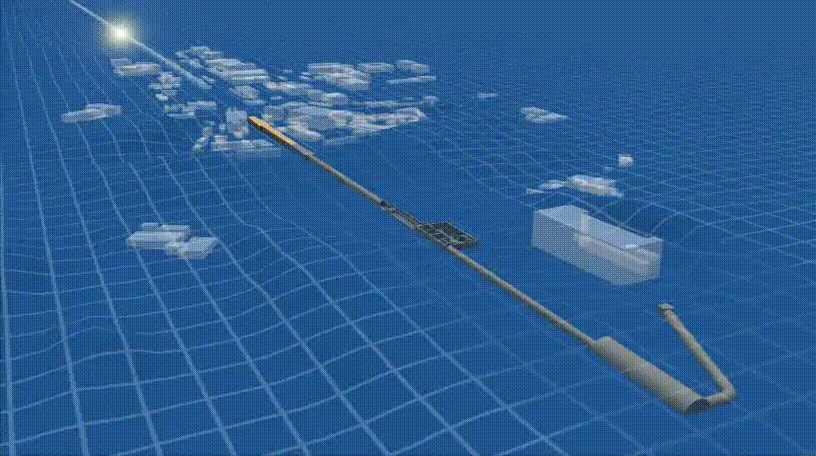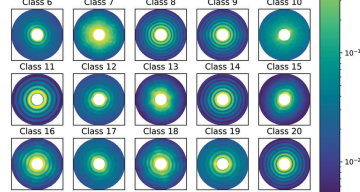Single Particle Imaging
Due to the resolution limits of visible light, X-rays or electrons are needed to obtain structural information on single molecules. However, X-ray and electron techniques comes at the cost that both are ionizing radiation which breaks bonds. There is a fundamental limit to the resolving power of an X-ray microscope of ~10 nm as the X-ray dose required to see smaller features is high enough to change the biomolecule on a length scale of more than 10 nm. While cryo-freezing the sample can help, there is still a fundamental limit to what can be observed on a single molecule using traditional X-ray methods.
However, the intense short pulses from LCLS can provide a middle ground between crystallography, where multiple copies of a biomolecule are observed in a lattice gaining higher resolution, and diffraction from a single frozen object with limited resolution. By aerosolizing individual biomolecules and probing them one at a time with the bright, coherent X-ray pulses from LCLS, a rich diffraction dataset of a biomolecule can be collected.

In Single Particle Imaging, multiple (oftentimes up to 1 million) diffraction patterns of the same object are collected. These diffraction patterns are sorted into classes using machine learning. Each class is then oriented into a 3D diffraction volume using various expectation maximization techniques. This diffraction volume is similar to data collected by crystallography, except it is continuous instead of individual diffraction peaks. This enables data to be directly phased and used to generate a 3D model of the object down to near atomic resolution.
Additionally, the sorting of the data into classes allows Single Particle Imaging to probe dynamics; the number of patterns of a class corresponds to the frequency it is found in this specific conformation state. The hope is that with the high repetition rate increase of LCLS-II enough data will be collected to enable molecular movies of the biomolecules in action.
The Single Particle Imaging technique is under active development in many areas at LCLS. New sorting/classification algorithms are being developed using AI and machine learning, as well as innovative orientation algorithms and methods of background scatter subtraction. Additionally, improvements in sample delivery techniques are an active area of research for the sample delivery team of LCLS, including improving sample concentration and reducing gas backgrounds.


